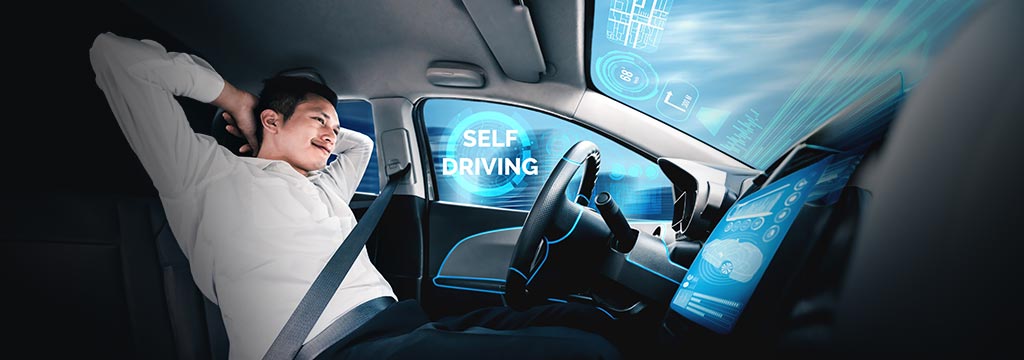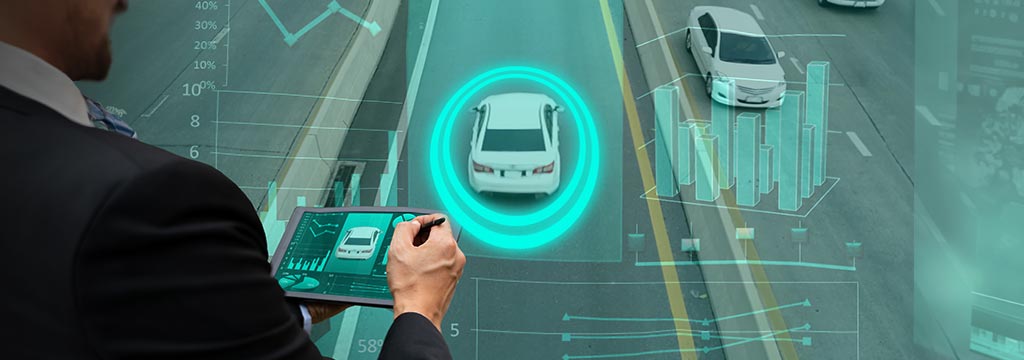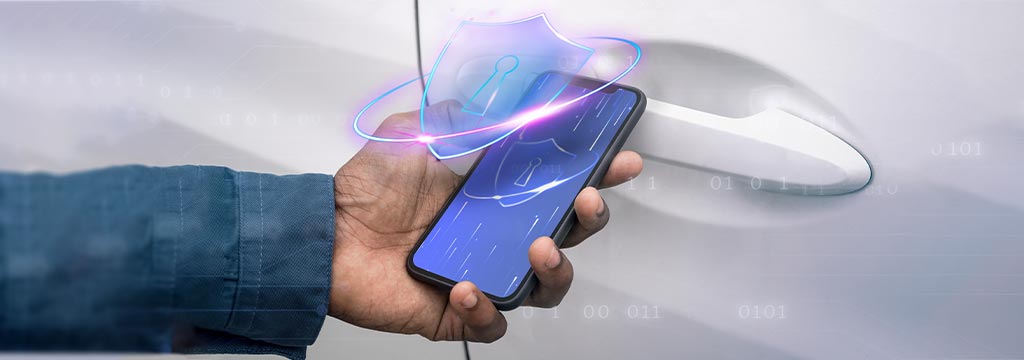The swift development of technology has resulted in a notable intersection between cybersecurity and autonomous driving technologies.
This juncture offers both opportunities and threats. This article discusses the complicated aspects of securing autonomous driving vehicle technologies, such as adaptive cruise control.
We will discuss the many hurdles identified in Tesla’s’ Autopilot recall.
Integrating autonomous driving technologies with deep learning and high-level connectivity frameworks has created a new battlefield for cybersecurity attacks.
There is a significant risk to public safety, as hackers can hijack software vulnerabilities and access unauthorised vehicle systems to alter critical functions.
We intend to focus on possible threats and exposures to portray the essential intersection between cyber security and autonomous driving evolution.
- The autopilot recall – a cybersecurity perspective
- Addressing safety concerns: The human element in cybersecurity
- Regulations of cybersecurity in autonomous vehicle
- The role of NHTSA and government oversight in cybersecurity
- Comparing vehicles to tech devices: A call for transparency in cybersecurity
- Conclusion: Charting a secure course in autonomous cyber-driving
The autopilot recall – a cybersecurity perspective
Autopilot recall in Tesla (United States) vehicles is a solid example of the cybersecurity pitfalls in autonomous driving technologies.
The recall is reflected in an incident during a software update on all vehicles, causing them to malfunction and possibly collide with static objects. This shows the impact of cybersecurity measures while developing these technologies.
Unmasking the autopilot recall
In November last year, the automotive company Tesla recalled approximately 570 thousand driverless cars produced under the Model Y and Model S lines equipped with an Autopilot driver assistance system.
This recall was due to a software update, which made the vehicles consider stationary objects like roadside construction barriers as national highway traffic safety cones.
This poor identification may result in hard braking or even an emergency lane change, posing a tremendous threat to the occupants and other road users.
General Motors has also committed to driver assistance technology and automated vehicle and driving systems.

Tesla’s initial response and its cybersecurity significance
Tesla’s first reaction to the recall was immediate and precise, introducing a new software upgrade addressing the misidentification problem.
Nevertheless, the event Tesla conducted spotlighted cybersecurity practices.
The update enabled by the software, which malfunctioned in this case, had been released over the air directly to motor vehicles, suggesting a possible cyber-attack could exploit similar updates and gain unauthorised access to vehicle systems, thus manipulating some critical functions.
The Autopilot recall is among many examples of the cybersecurity problems associated with implementing advanced driving technology and driver assistance systems adas.
The more these systems become connected and complex, the more vulnerable they are to cyberattacks.
With the help of advanced tools and methods, hackers may also penetrate control systems, disrupting the braking, steering wheel or other vital functions, leading to crashes.
Testing the autopilot recall: Cybersecurity Implications
The process of testing revealed to us the highly complex relationship between software updates and cybersecurity vulnerabilities.
Unfortunately, the vehicle owners’ over-the-air updates feature created a new backdoor for malicious users to exploit.
This software update process created a weakness that an attacker could utilise to gain access to the vehicle systems and manipulate critical functions.
The potential of cyberattacks to control vehicles and thereby breach safety issues for human lives is undeniable. With the advent of fully autonomous vehicles becoming a growing reality, we should remain very wary and sceptical about cybersecurity.
Since over-the-air updates are much more convenient, companies should not compromise cyber security. Manufacturers must focus more on security facilities and strong security protocols that protect vehicle systems from cyberattacks. Very effective cybersecurity strategies should involve detailed testing, ongoing monitoring, and open dialogues with the user.
Addressing safety concerns: The human element in cybersecurity
One of the critical factors in human involvement in cybersecurity is that it involves human drivers and human errors for semi-autonomous cars.
Though automation replaces some of the many driving tasks and duties, drivers need to be alert and prepared for prompt intervention.
Knowledge about driverless vehicles’ strengths and weaknesses helps drivers make rational decisions and act in a timely manner in case unpredicted incidents occur.
Regarding autonomous driving, humans’ responsibility and liability are not only within the driver’s seat. Key players in the industry, such as developers, manufacturers, and regulators, shape the cybersecurity environment of AVs. Human decisions made during the design, testing, and regulation of these technologies have a very big direct effect on how safe or insecure the entire ecosystem is.
One of the pillars in resolving safety issues is user training and awareness. Drivers should know the many strengths and weaknesses of autonomous driving systems. Enlightening the users regarding possible cyber threats, privacy issues, and the necessity of maintaining software and systems is essential. The user’s knowledge of identifying and reporting suspicious activities plays a key role in contributing to cybersecurity resilience.
Users’ knowledge and skills must adapt to changing technology. A continuous cycle of training programs is established to train drivers on the latest cybersecurity innovations. This also means learning how to operate the ADAS and self-driving systems properly. A steady flow of UI adjustments accompanied by concise and precise communication can build user confidence, making the transition to new technologies seamless.
Regulations of cybersecurity in autonomous vehicle
Implementing autonomous driving technologies presents many challenges that necessitate progressive and adaptive regulatory policies. Governments and regulatory offices worldwide grapple with building models that balance innovation, safety, and security. Autonomous driving demands extensive cybersecurity regulation that accommodates the variable nature of technology and ensures a consistent approach toward protecting users and the wider system.
Globally, regulatory standards for cybersecurity in autonomous vehicle technologies are being developed. These standards stipulate minimal criteria regarding the development, implementation, and testing that cybersecurity measures in autonomous vehicles require. A review of the present regulatory framework shows that it is necessary to harmonise and align with different jurisdictions to have one consistent set of regulations that can withstand rapid technological changes.
The need for strong accountability in the cybersecurity of autonomous driving complements the regulatory initiatives. Accountability goes far beyond just compliance with the regulations and incorporates a proactive responsibility to ensure the safe standards of autonomous vehicles throughout their entire life cycle. This accountability includes well-defined leadership responsibilities for the manufacturers, developers and other relevant entities participating in the innovation of autonomous driving technologies.
A major accountability component is the transparency of cybersecurity strategy development undergoing testing. Manufacturers and developers are obliged to provide insightful ways in which autonomous vehicles’ protection from cyber-attacks was applied. This transparency helps build trust among users and enables collaborations to discover vulnerabilities and correct them before deployment.

Cybersecurity in autonomous vehicle
In a way, Tesla’s Autopilot recall is critical in cybersecurity practices and protocols within autonomous driving. Insights on the recall help understand the complex issues autonomous vehicle manufacturers face in defending their systems from cyber threats. The recall, initiated in response to the potential weaknesses inherent in the Autopilot system, emphasises how cybersecurity risks related to autonomous driving are very dynamic and may change rapidly.
Considering the wider consequences, industry participants must weigh how this recall affects consumer confidence, technological developments, and regulators. Consumer confidence in autonomous driving technology is also very likely to influence a more conservative approach to adoption. Manufacturers face the challenge of walking a tightrope between technological breakthroughs on one hand and security breaches that can affect other businesses across an entire industry.
Cybersecurity protection in autonomous driving is everyone’s responsibility, including regulatory bodies and industry actors. Manufacturers are key in building and maintaining strong cybersecurity programs to protect their vehicles from threats. The Autopilot recall exemplifies this, showing that proactive approaches in detecting and mitigating weaknesses are crucial for preserving public faith and security.
Consequently, regulators like the NHTSA should work closely with manufacturers to develop and implement cybersecurity standards. The regulatory system should sync with technological changes and provide consistent rules and requirements for using or developing autonomous driving systems. Such a harmonised approach to regulation encourages innovation while providing the necessary level of cybersecurity provisioning throughout.
You may also be interested in Cybersecurity for Streaming Enthusiasts
The need for comprehensive cybersecurity solutions
We can say that autonomous vehicles are a fusion of modern technologies such as artificial intelligence, connectivity and complexity in software systems. Although such innovations pave the way to a much less dangerous and more productive future of roads, they still pose many new cybersecurity problems. Focusing on the need for intelligent cybersecurity solutions to guard against potential threats targeting autonomous vehicles is critical to strengthen and safeguard their safety and functionality.
In contrast to the traditional car, autonomous vehicles have many software-driven decision-making systems. This fundamental dependence on software makes them vulnerable to cybersecurity threats, such as unauthorised access and malicious modifications in the sensor data feed. Intelligent cybersecurity systems must incorporate the latest threat detection measures, strong encryption techniques, and real-time alerts to anticipate threats early before they gain any traction.
Paralleling the case of applications in the technology sector, which are scrutinised by cybersecurity before being released to individuals, similarly underscores a need within the automotive industry. Mobile applications and software go through an elaborate process of testing and evaluation to ensure that they adhere strictly to very high-security standards before reaching end users. This method focuses on preventative security procedures, limiting the susceptibility of vulnerabilities that bad actors can misuse.
The automotive industries must change their thinking and see cybersecurity not as a single attempt but as an ongoing commitment throughout the lifetime of autonomous vehicles. The comparison illustrates the importance of manufacturers incorporating cybersecurity measures in all design, development, and testing stages, necessitating a strong foundation for future cyber threats.
Challenges in post-release cybersecurity reviews
In traditional methods of post-release cybersecurity reviews in autonomous driving technologies, the system rarely provides a complete solution to the ever-changing nature of threats. In contrast to standard vehicles, autonomous cars depend heavily on software and linkage, making them very vulnerable to all cyber risks. This criticism stems from current post-release reviews inadequately adapting and responding to such newly emerging threats, leaving possible security gaps that attackers may pick with time.
Therefore, a significant challenge in the post-release review process is static assessments that may miss out on the vulnerabilities introduced during operational life. Since cyber threats are constantly changing, so must the review process. Therefore, regular checking, threat integration intelligence, and possibly uploading security patches and updates whenever new vulnerabilities emerge are needed.
Exploration of potential cybersecurity risks introduced by software updates
Autonomous vehicles have their peculiarities—software updates are a double-edged sword. Updates make advancements, bug fixes, and other better features available; however, they compromise security threats. Studying these risks is necessary to understand the complexities and issues of ensuring a safe environment in an ever-developing field like autonomous driving.
In a hurry to release updates quickly, manufacturers could forget about proper security testing to ensure that exploitable weaknesses are not purposefully inserted. Since many hackers target these vulnerabilities, there are risks to the security and privacy of both vehicle occupants and wider transport systems.
Another obstacle is the secure transmission and deployment of software updates. As vehicle connectivity increases, the update process creates many novel pathways for cyber attackers. Assuring intact update channels and safety during installation is an inevitable step to prevent malign actors from attacking the vehicle software while updating.
The role of NHTSA and government oversight in cybersecurity
The NHTSA is instrumental in creating and enforcing cybersecurity criteria supporting the safe implementation of autonomous driving technologies. It oversees more than traditional car safety, comprising dynamic and distributed cybersecurity scenes. The duties of regulatory bodies such as the NHTSA are discussed in depth, including their role in developing comprehensive guidelines, standards, and legal frameworks that govern cyber security features for autonomous vehicles.
The development of adaptive regulations that evolve along with the speedily changing nature of autonomous driving technology is a preeminent responsibility. There is a need for collaboration between the NHTSA and industry stakeholders, cybersecurity experts, and other regulators to develop a unified approach that seeks balance in supporting innovation while at the same time ensuring safety. Through its transparent and flexible directives, the NHTSA significantly contributes towards creating a safe baseline for integrating and deploying autonomous vehicles on public roads.
As the autonomous driving industry advances, a resounding call for enhanced legal steps and responsibility reverberates. This call to action requires the legal binding of manufacturers with strict cybersecurity standards throughout all stages of the autonomous vehicles cycle. In a real world where technology changes very quickly, the legal frameworks need to be changed so they can reward proactive cybersecurity enforcement and hold all manufacturers responsible for the safety of autonomous driving technologies.
This attempt at increased legal measures may include passing legislation dealing with cybersecurity in autonomous driving and highlighting manufacturers’ minimum requirements and expectations. These legal frameworks should be a template to follow, encouraging best practices while discouraging negligence and making the repercussions of non-compliance very clear. The demand for accountability is not just a legal mandate; it also becomes an ethical obligation to protect the community while confronting new cyber paths.
Comparing vehicles to tech devices: A call for transparency in cybersecurity
There is a significant difference in the scrutiny cars and smartphones undergo regarding pre-release cybersecurity. Over the years, cars have been put through safety tests but not as much cybersecurity testing as technology products. On the other hand, smartphones and other technology gadgets go through a thorough pre-release review process to find any vulnerabilities and rectify them before they reach consumers.
Traditionally, the attention in the automotive sector has focused on physical safety issues, while cybersecurity concerns have only recently come to play a very important role. The analysis shows that the vehicle transformation into connected and autonomous must result in a paradigm shift. If left unaddressed, cyber threats may constitute enormous risks to automobile vehicles’ and their customers’ safety and security.
Advocacy for Increased transparency and cybersecurity measures
The comparative analysis reveals that higher levels of transparency, automation, and cybersecurity are needed in the development process for autonomous driving technologies. Transparency, a common feature within the tech industry, must be embraced because it significantly builds trust from users, manufacturers, and regulators. In the case of autonomous vehicles, transparency highlights communicated cybersecurity practices and measures along with the risks tied to that technology.
This move supports the emergence of more sophisticated autonomous driving systems. However, cybersecurity protocols need to become a core component of the design processes associated with autonomous vehicles. This preventive technique allows us to find and neutralise probable vulnerabilities, protecting the car and its passengers.
Aligning standards for safety and cybersecurity
The demand for transparency and increased cybersecurity standards is based on the need to ensure that the automotive sector’s supervision requirements are identical to those of the tech industry. Although physical safety will always be critical, increasing technology adoption into cars requires a more comprehensive approach that includes traditional concerns and potential cybersecurity threats.
Coordinating safety and cybersecurity standards requires the cooperation of many automotive manufacturers, technology firms, and regulatory agencies. Manufacturers should develop a holistic approach since autonomous vehicles require hardware and software resilience to avoid cyber threats.
Conclusion: Charting a secure course in autonomous cyber-driving
With TesTesla’scently recently initiated Autopilot recall, cybersecurity has emerged as an integral factor in today’s changing paradigm of autonomous driving. The problems identified in this recall, from possible vulnerabilities to fast response needs, illuminate the evolving nature of cybersecurity threats in autonomous vehicles. It raises the question of whether the industry is prepared to deal with some of all cyber matters, stressing that reactive measures are not enough.
The industry can overcome obstacles and strengthen itself by charting a safe path. The call-to-action rings out as an invitation for all stakeholders to come together by their commitment to creating a future in which we do not just reconfigure transportation but do it safely and responsibly.
Read More: Cyber Security Skills and Tips for Web Developers

Lets Talk!
If you have additional comments or questions about this article, you can share them in this section.